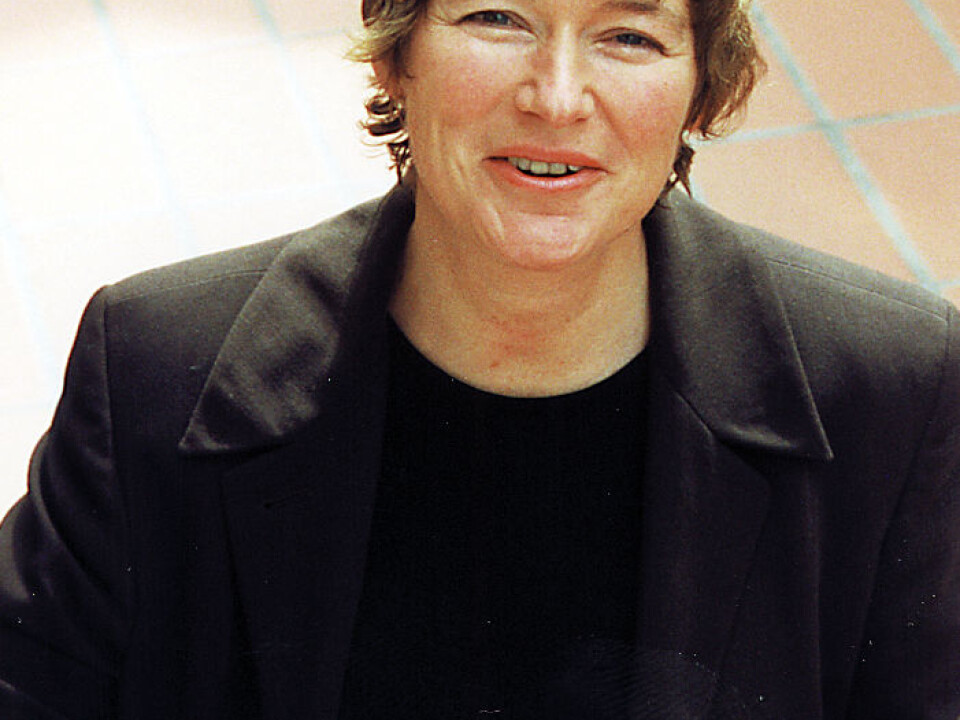This article was produced and financed by BI Norwegian Business School

Forces that enable creative design
New and creative design comes about through close collaboration between dedicated industrial designers and key personnel in companies.
Denne artikkelen er over ti år gammel og kan inneholde utdatert informasjon.
General interest in design is on the rise. Good industrial design may also be the key to successful innovation and commercial success. Unfortunately, however, relatively few Norwegian companies distinguish themselves on the design front.
"If Norway is to make a mark in terms of new and future-oriented design, we must dare to do things differently," says Associate Professor Birgit Helene Jevnaker at the BI Norwegian Business School.
In search of industrial design – hidden treasures
In her PhD study Jevnaker examined how creative design can be developed through long-term collaboration between enterprising company employees and external specialists in industrial design.
Among other things, she followed design development processes at furniture manufacturers Håg and Stokke, the reverse vending solutions company Tomra, and Hamax, a manufacturer of child seats for bicycles, snow sledges, and ski products.

Jevnaker interviewed 54 managers, developers and marketing professionals from five industrial export companies and three service companies. She also interviewed several experienced, specialist designers from leading design firms in Norway and abroad. About 100 people in total were interviewed.
"We find a hidden treasure of models, know-how and modes of collaboration in the close cooperation between companies, industrial designers and design agencies. Long-lasting cooperation like this can create iterative innovations," says Jevnaker.
Five forces that enable creative design
The study shows that design development can go on in more than one place, both within a company and outside. The industry designers bring their experience and networks with them into the company. This is paired up with the company's network of representatives in design development projects.
Birgit H. Jevnaker has identified five enabling forces that promote development of new, creative design:

1. Design-alliancing: Development of extraordinary relationships between knowledgeable designers and well-established companies. However, creative design development has often criss-crossed established thinking and ways of working. The work can explore, challenge and add new elements to existing functions, knowledge communities and areas of responsibility.
2. Organising design: Design development with creative designers was organised and coordinated both within and between the companies. The work was not simply outsourced to design consultants. On the contrary; design skills were gradually developed and given a free rein in development processes in several areas within the companies and between designers and other collaborative partners.
3. Acting in arenas of activity: A series of design-based activities emerged in several arenas of collaboration. It involves user observations via studios, work in the workshop, meetings and events with distributors and dealers. The work went to and fro, between outlines and models and between specialists and users.
4. Championing: In supportive, dynamic, creatively provocative and persevering ways, designers and some of the managers became engaged to achieve "something more" in design and innovation.
5. Time in and across situations: Time pressures and constant exertion over time were found to be linked to atypical industrial companies and design firms. It was only after years of effort that new and unfamiliar design such as the Tripp Trapp children's chair or the Capisco saddle-seat office chair took off commercially. On the other hand, however, they came to represent core products and durable thinking in the export companies involved.
"The five forces have meant that Håg and Stokke – and, indirectly, Norway – have become 'world champions' in innovative seating solutions. These companies have won numerous design awards and international recognition. And – most important of all – new design proved itself to be viable among users," says Birgit H Jevnaker.
Three pieces of advice to managers
The BI researcher believes that Norwegian companies have a lot to learn from the companies and specialists examined in the study. She ventures to offer three pieces of practical advice to managers who genuinely want to create new design and innovation within their companies:
1. Participate actively in the design development process. This will give you experience and place you in a better position to understand quality and value-creating opportunities.
2. Dare to fight for and support development of something new and durable through collaborating with knowledgeable designers and other specialists across borderlines between disciplines and organisations.
3. Use iterative and sufficiently deep processes. Industrial design in the companies that were examined in the study involves iterative, dynamic rounds of engaged, collaborative creativity with other specialists in order to realise something new and better.
































